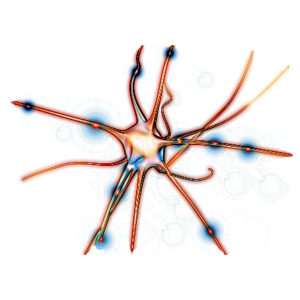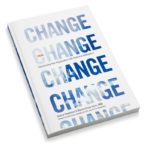 One of the most exciting aspects of working with Six Seconds these last 15 years is the opportunity to encounter people from SO many places. Perhaps the most diverse group was leaders from the United Nations Mission in Liberia – UNMIL – 16 people from 14 countries, a paint-box of colors, creeds, and histories. Also people from legal, aircraft, supply, training, corrections, communications… and some fairly young managers as well as some of the most senior… so many barriers, so many differences.
One of the most exciting aspects of working with Six Seconds these last 15 years is the opportunity to encounter people from SO many places. Perhaps the most diverse group was leaders from the United Nations Mission in Liberia – UNMIL – 16 people from 14 countries, a paint-box of colors, creeds, and histories. Also people from legal, aircraft, supply, training, corrections, communications… and some fairly young managers as well as some of the most senior… so many barriers, so many differences.
Yet: After a couple of days together, we were just people learning together.
Over and over and over I’ve experienced that in the realm of emotion, there is a vast and uncomplicated common ground. As I’ve written before, I feel a profound relief to find this connection.
Looking at my calendar for the next few months, I’m a little alarmed at all the global connections! But I hope to meet you someplace in the world to re-anchor. Here’s my schedule — all these are listed on our EQ Certification Calendar along with even more programs by our amazing master trainers!
March 1-2 – Phoenix, AZ – joining the EQ Educator Certification, a very practical program for those teaching the skills of EQ to deepen their understanding of the process and methodology to be even more effective.
At the end of March, I’m off to Singapore for work with a business school there, then onto India.
April 9-13 is the transformational EQ Certification. Last time in Mumbai it about blew my socks off – this deeply powerful experience of engaging in the Six Seconds’ method and model – designed for professionals in development, this is equally fabulous for leaders and individuals looking for tools for transformation. Something about India… people who have an ancient, deep spirit now on the burgeoning frontier of commerce.
April 16-19 the Mumbai adventure continues with our program for coaches to learn the SEI assessment toolkit and Six Seconds’ coaching framework. The SEI Coach is intended for people who have skills and qualifications in coaching to supercharge their work.
After a brief stop back home, in May it’s time for Europe. We’re holding the EQ Certification in Dublin with the Irish Management Association on May 7-11. Max Ghini, our Regional Director for Europe – and Director of Global Strategy – will be delivering this with me so it will be a fabulous session for those looking to gain the strategic value of EQ.
May 12 we’re planning a Europe EQ Network conference — more on that soon!
Then in June, I’m back to Asia — for the SEI Coach Certification in Tokyo on June 13-16 — plus several in-house projects.
On June 19-20 we have a launch of Six Seconds Indonesia with the Jakarta EQ Conference.
Then the EQ Certification in Kuala Lumpur on June 26-30. I’ll be there with our new Malaysia Country Director, FC Law, who is launching this along with our Regional Director for Asia, Granville D’Souza — so it will be a total powerhouse week!
July we’re in California — the EQ Certification is July 9-13 in Menlo Park. Our 14th year of this course, in July, in this place — always an incredible experience as people come from around the world for the opty to engage with many of our senior team members.
Finally, July 16-19 is the SEI Coach Certification in Menlo Park — again for coaches to take it higher.
I’ll be ready for a little relaxation time after that! People often ask me how I find the energy for all these programs — but the truth is I gain energy from this work. Imagine the opportunity to be with people who are truly committed to adding EQ in the world — and their delight in finding methods and models and a “way of being” that makes it really possible. It’s a remarkable journey we’re on together — both the journey around the globe, but perhaps even more dramatic is the journey of connecting.


 One the reasons Six Seconds’ programs are transformational is our commitment to a rigorous approach to learning. We come from a “constructivist” history, rooted in the humanistic school of education. In constructivism, the goal is for learners to build (construct) meaning. Rather than imparting information or telling them what you’ve just taught, a constructivist focuses on facilitating learners to answer their own questions and to integrate new insights. We are also influenced by “confluent” theory, the notion that richness in learning comes from the flowing together of cognition and emotion.
One the reasons Six Seconds’ programs are transformational is our commitment to a rigorous approach to learning. We come from a “constructivist” history, rooted in the humanistic school of education. In constructivism, the goal is for learners to build (construct) meaning. Rather than imparting information or telling them what you’ve just taught, a constructivist focuses on facilitating learners to answer their own questions and to integrate new insights. We are also influenced by “confluent” theory, the notion that richness in learning comes from the flowing together of cognition and emotion. The Change MAP, and our learning design method, is a spiraling cycle. There are three phases which we present in a circle to emphasize the fact that learning (and change) require numerous iterations. In the MAP, you can see the critically important “red lines,” the emotional transitions required to accelerate change. These same transitions are essential for learning, because if we don’t get emotional connection, we don’t get hot cognition. The three phases are:
The Change MAP, and our learning design method, is a spiraling cycle. There are three phases which we present in a circle to emphasize the fact that learning (and change) require numerous iterations. In the MAP, you can see the critically important “red lines,” the emotional transitions required to accelerate change. These same transitions are essential for learning, because if we don’t get emotional connection, we don’t get hot cognition. The three phases are:




 Here are six ideas, please comment and add your perspective.
Here are six ideas, please comment and add your perspective.
 Recently my family and I I had the pleasure of sitting zazen with an amazing monk. He’s the fifth generation of monks in this 600-year-old temple, Shunkoin, in Myoshinji (in Kyoto), and his son will be born soon. Sitting on the tatami mats glowing in the morning sun, looking at the simple geometry of hand-cut wood framing the walls, watching the incense smoke curling around my 10-year-old son (in his bright orange signature colors), I was touched by the confluence of all these rivers coming together in that one moment. Kawakami-san, “our” monk, reminded us that every moment, the moment is passing. And as the moments pass, often we end up with fewer and fewer choices. Life is not a static experience, but one of continuous flow.
Recently my family and I I had the pleasure of sitting zazen with an amazing monk. He’s the fifth generation of monks in this 600-year-old temple, Shunkoin, in Myoshinji (in Kyoto), and his son will be born soon. Sitting on the tatami mats glowing in the morning sun, looking at the simple geometry of hand-cut wood framing the walls, watching the incense smoke curling around my 10-year-old son (in his bright orange signature colors), I was touched by the confluence of all these rivers coming together in that one moment. Kawakami-san, “our” monk, reminded us that every moment, the moment is passing. And as the moments pass, often we end up with fewer and fewer choices. Life is not a static experience, but one of continuous flow.
 Luckily, today the sun was breaking through the clouds, so I picked up a sandwich for lunch and headed to a favorite beach for a 15 minute renewal break.
Luckily, today the sun was breaking through the clouds, so I picked up a sandwich for lunch and headed to a favorite beach for a 15 minute renewal break.

 I was recently talking to a group about the fact that we can choose how we feel.
I was recently talking to a group about the fact that we can choose how we feel.




